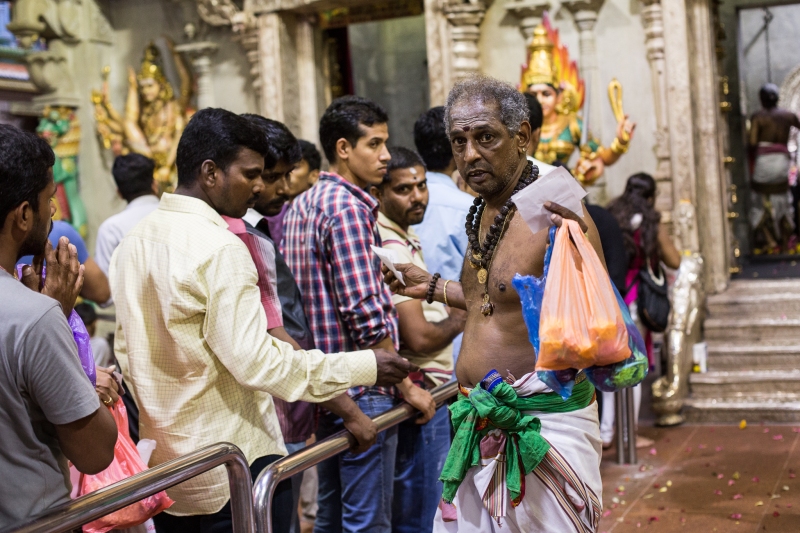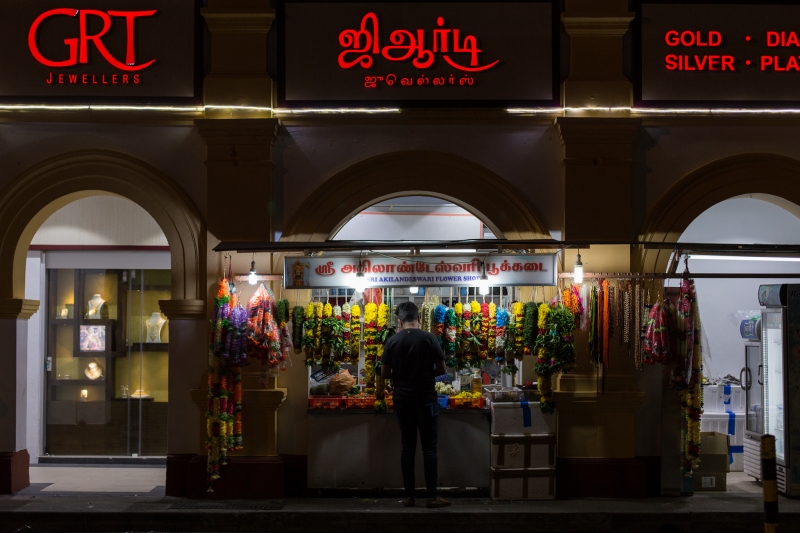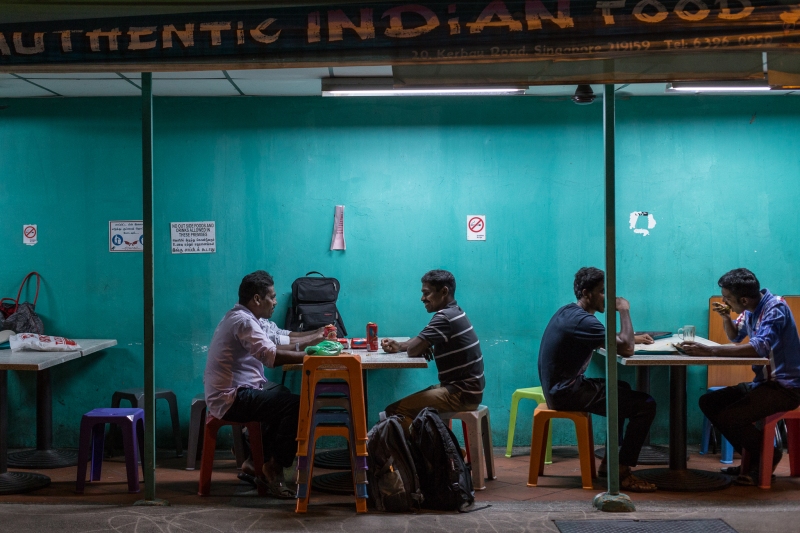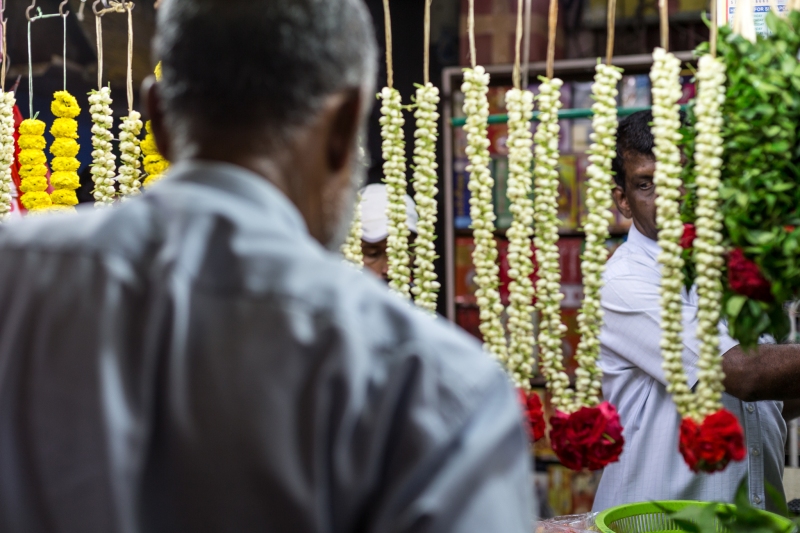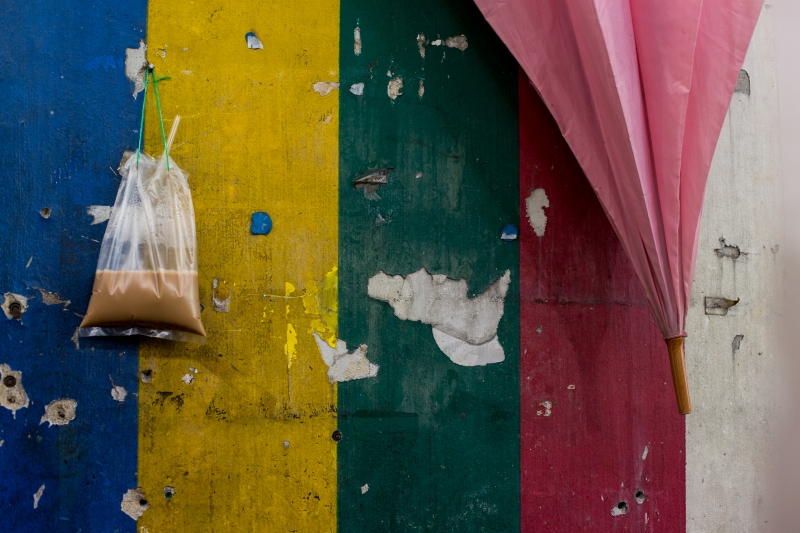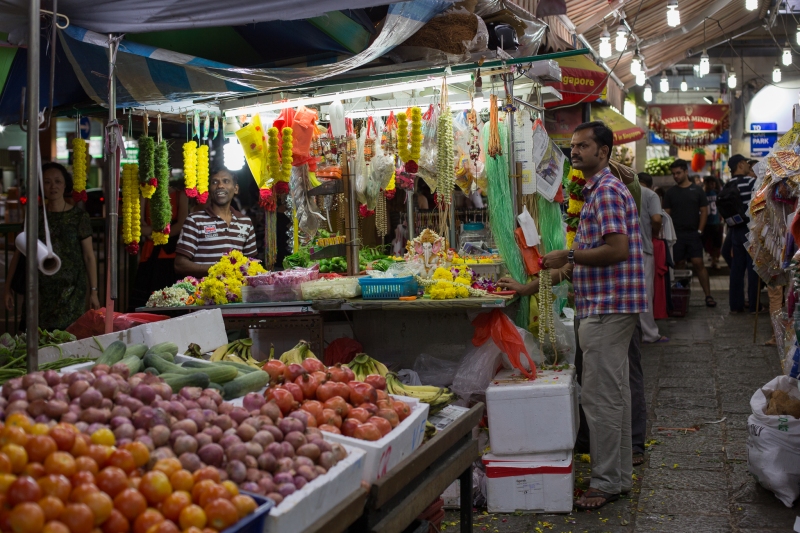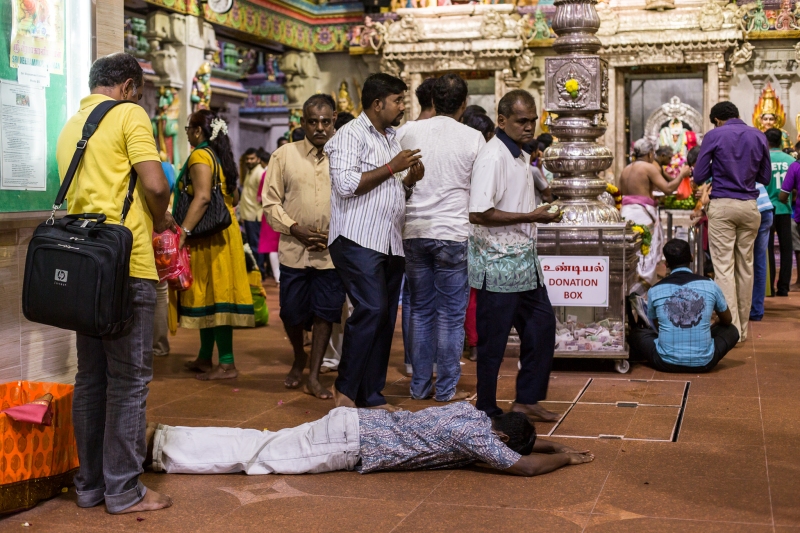Little India bustles along through the tropical heat of the day with it markets, temples and eating houses. The Singapore enclave derives its name from its inhabitants who form the majority of its population. Traditionally Tamil by majority, Singapore’s strict racial harmony policy means this area is now much more diverse. However, it still retains its very own cultural heritage, notably in the conservation area.
Little India is split down the middle of its length by Serangoon Road, one of the oldest roads in Singapore. Branching off this dividing line lie the roads and streets that make up this important part of Singapore. Street names, evocative of days past, dot the cultural landscape in Little India. Some of the names seem somewhat at odds with their surroundings; Dickson Road, Dunlop Street and Campbell Lane. While others fit right in; Madras Street, Hindoo Road, Buffalo Road. This crossover between the Western and Eastern influence is a microcosm of Singapore history.
As it simmers and stews in its own unique juices during daylight hours, Little India starts to cool as the light diminishes and the sun disappears behind the HDBs that surround it.

A view of the social housing from Campbell Street as the sun goes down.
As the light recedes, Little India changes pace, workers finish for the day, families with children start to arrive to shop and friends gather to share a beer and some food. As we travel north on Serrangoon Road we find numerous references to the industry that Little India was built around. The streets around the Tekka Centre are crammed with references to the cattle trading that started in the mid-1800s. Immigrants from India settled here to carry on their business as owners and labourers alike. Buffalo Road is the most obvious allusion to this trading.
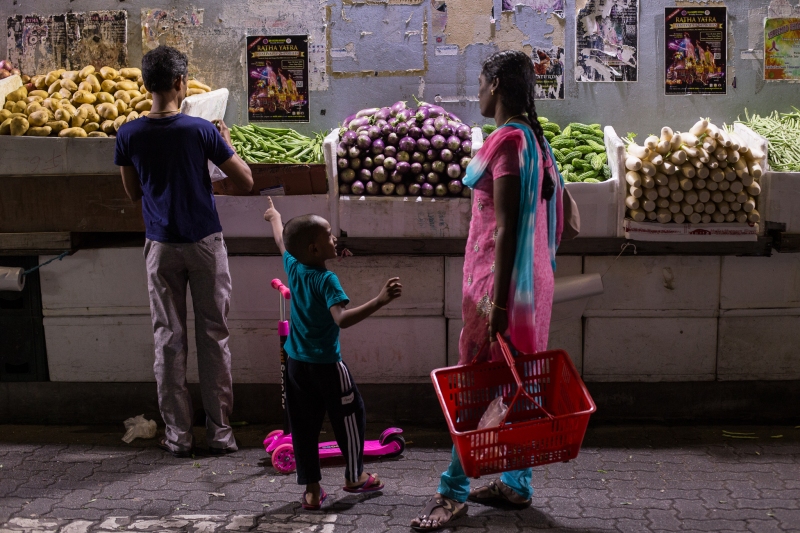
A family shops in a lane on Buffalo Road
Crowded with shops selling food and flowers, Buffalo Road is at the hub of most people’s visits to the area. With the wet market directly opposite, this is the place to find your food for the week.
Walking through this small lane brings us to Belilios Lane. Isaac Raphael Belilios’ name is synonymous with with the cattle trade here. Born in Calcutta in 1846 he started his business in Singapore at an early age to become one of the areas most successful cattle traders.
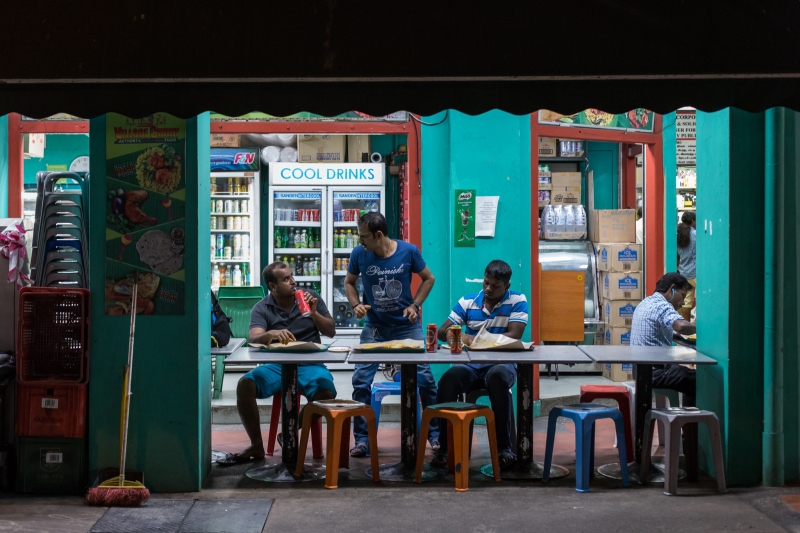
Strong beer drunk through straws and playful banter make the food taste all the better
A naturally fertile area fed by the Rochor River, Belilios saw the potential for breeding and trading cattle. The ‘Authentic Indian Food‘ restaurant shown above is on the corner of Belilios Lane and Kerbau Road. ‘Kerbau‘ is the Malay word for ‘water buffalo‘ and demonstrates the Malay influence over the area and Singapore as a whole as well as connecting back once again to the cattle trade.
Heading north on this lane takes us to Belilios’ second eponymous road. This is the site of the Hindu temple of Sri Veeramakaliamman, a beautiful, friendly and always busy place of worship that is popular with tourists and locals alike. Night brings devotees along after their work commitments to pray and make offerings to their chosen deities.
Amongst the oldest Hindu temples in Singapore, it was built by early immigrant settlers to service the religious needs in central Little India. It was used as a shelter during the second world war during the numerous air raids over Singapore. The temple escaped the war remarkably unscathed.
Hopping across Serangoon Road from this sanctuary shows the apparent antithesis to these names which appear very much more Western and with good reason. The British have been in Singapore ever since Sir Stamford Raffles stepped ashore in 1819, founded colonial Singapore and with it a trading post for the East India Company.

Two men converse at one of the Project Oasis installations on Clive Rd
The road running parallel to Seranagoon Rd bears the name of (Lord) Robert Clive. A somewhat colourful military figure in the 18th century, Major-General Clive laid the foundation for the British Raj in India. His exploits were captured in in the 1935 film ‘Clive of India‘. Ironically Clive never spent any significant time in Singapore but he was seen as worthy of having a road named after him in, of all places, Little India. The social side of Little India continues in this quiet corner with friends meeting to talk and relax in this colourfully lit area.
A short stroll south of this installation brings us to Dunlop street. Here we find more grocery stalls and shops tucked in to the five foot ways of the shophouses which Singapore is famed for.

Grocery shopping under the fluorescent glare of the lights
As is synonymous with South East Asia, large fluorescent lights bare down on the vegetables, fruits and plastic bags as local men come to shop for their groceries. Above the potatoes and carrots you can see the old delivery door where goods would have been hauled up for storage. It is likely this street was named after Colonel Samuel Dunlop who served in Singapore as the Inspector-General of Police of the Straits Settlements in 1875. But, as with many of these older names that were common at the time, there is some ambiguity as it could also be named after A.E. Dunlop, Secretary of the Race Course Committee of the Serangoon area. One suspects it comes down to who had the most power and influence at the time or subsequently.

Men gather to watch a communal TV a Kopi house while workers check their phones at a kiosk next door.
A common sight in Little India, the blue light of the television brings men together to watch a Bollywood film and talk about the day they’ve had. People stop as they pass to see what the interest is and take a moment to watch. The film plays, the food is served and the beer and conversation continue to flow late in to the night.
References
‘Singapore Street Names – A study of Toponymics‘ (2013) -SAVAGE Victor R., Brenda YEOH
‘Discover Singapore, Heritage Trails‘ (2006) – National Heritage Board
‘Historic District : Little India‘ (1995) – Urban Redevelopment Authority
‘Singapore : a guide to buildings, streets, places‘ (1988) – Norman Edwards & Peter Keys
Conde Nast Traveler magazine
National Geographic Travel Magazine Asia
Alternative images for the assignment can be found here
